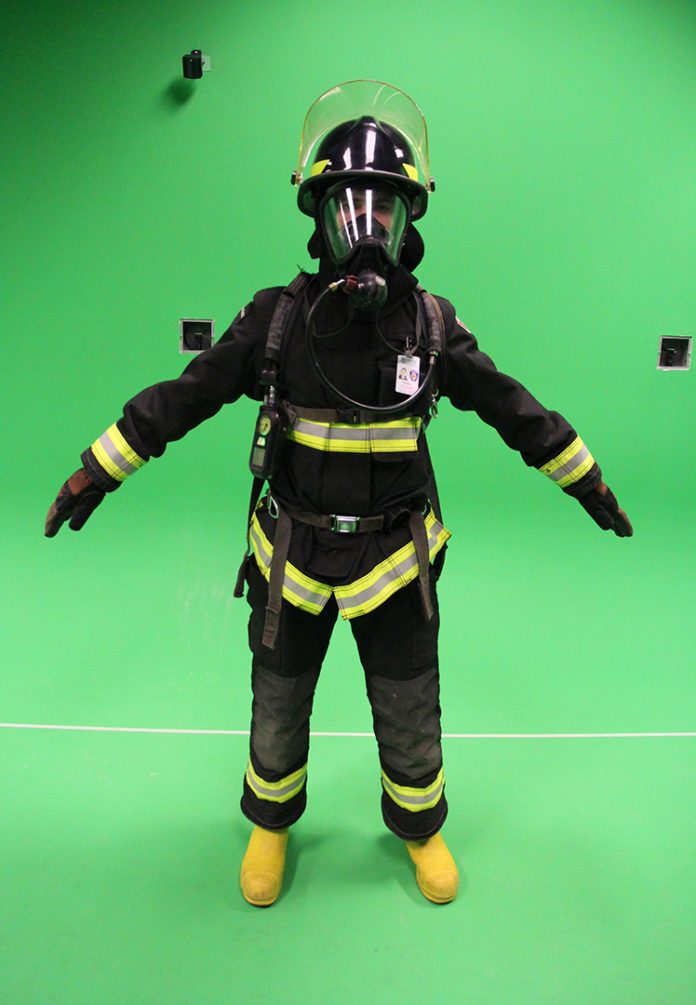Fire fighting is a risky profession.
Sudden cardiac deaths, internal trauma, burns and asphyxia are common among firefighters. As per a research conducted by British Columbia Injury Research and Prevention Unit, injuries during work account for 90 per cent of all time-loss claims, affecting one in 50 firefighters each year.
Michael Williams-Bell, program coordinator for the Fitness and Health Promotion program at Durham College is trying to make the training aspect of firefighting less risky and more detailed.
Williams-Bell is collaborating with Oshawa Fire Services through TeachingCity Oshawa. He aims to use virtual reality to simulate uncontrolled fire scenarios such as building collapse situations and improve training for firefighters using immersive life-like, experiential learning. This technology would elicit physiological and psychological responses similar to the human reactions of a real fire scenario with the major difference being that there is much less risk of injury.
Williams-Bell has spent the last 16 years working in collaboration with the fire services. He met with the Oshawa fire service in late 2016 and posed this question: “What is an area you can’t train in that we could potentially develop, you know, immersive training or virtual training.” The answer Williams-Bell got was ‘Building collapse scenarios,” and he was off to work.
He approached John Goodwin, program coordinator for the Game Art and Development program and the Principal Investigator at the Mixed Reality Studio at Durham College. Williams-Bell says, “It’s been a four-year project. We started chatting in 2017 and got funded through the College and Community Social Innovation Fund last April.”
Once the funding came in, Goodwin and Williams-Bell started their research.
What is the role of The Mixed Reality Studio in this initiative?
“We’re doing the heavy lifting,” says Goodwin jokingly. He is using the Quest 2 VR headsets along with motion capture suits to give trainees simulation training where they can hear and see.
All the kinetic motions during the simulation are recorded and can be played back to train and give feedback to the firefighter trainee.
“We’ll know whether a firefighter is lifting with their back instead of their knees. We can scrub back through that simulation and show them exactly what they’re doing wrong, where their form is poor and could be better to improve the quality of their training and education,” says Goodwin.
Unlike traditional VR games, trainees will be well connected with each other and will be able to see each other’s limbs and body motion.
“When a user reaches out and touches a wall in the simulation, they’ll feel a physical wall in the real world. That gives us that tactile feel that is missing from a VR experience normally,” says Goodwin. “We can track you right down to the fingertip.”
Goodwin and his team would be able to monitor the trainees’ heart rate, oxygen intake and body temperature. He says, “we can effectively not only represent the data in a HUD, we can say, ‘here is your BPM,’ we could actually have that affect the simulation in real time.
For Goodwin, this project is not much different than game designing. “It’s not a big pivot,” he says. They are still building the same models, same kinds of environments, the same physics and VFX simulations only now, “instead of targeting it towards a game that they would play and the environments that they would build for games we target it towards the environments that we could build for training and simulation,” says Goodwin.
John and his team hope to start in-person research this time next year. They aim to collect data by doing their research at the ACE Facility at Ontario Tech University by creating high heat and humidity scenarios.
Williams-Bell says, “This isn’t a three-year project. It’s an ongoing one. We’re going to get to a certain place in three years, but then continue to fine tune and improve moving forward.”




